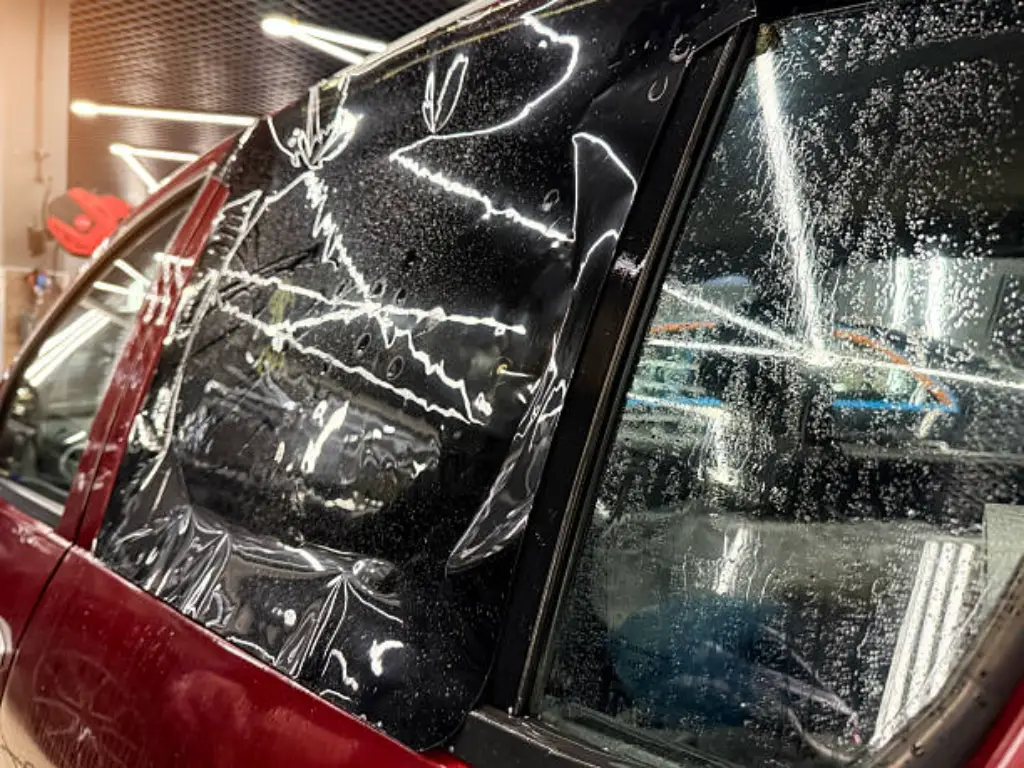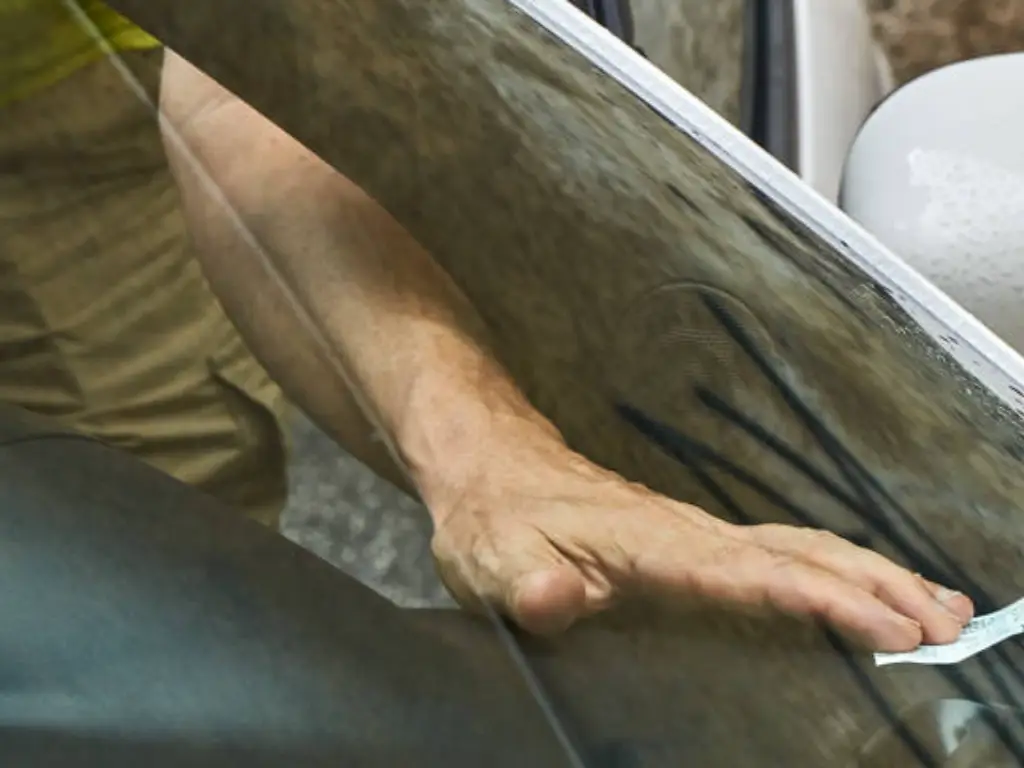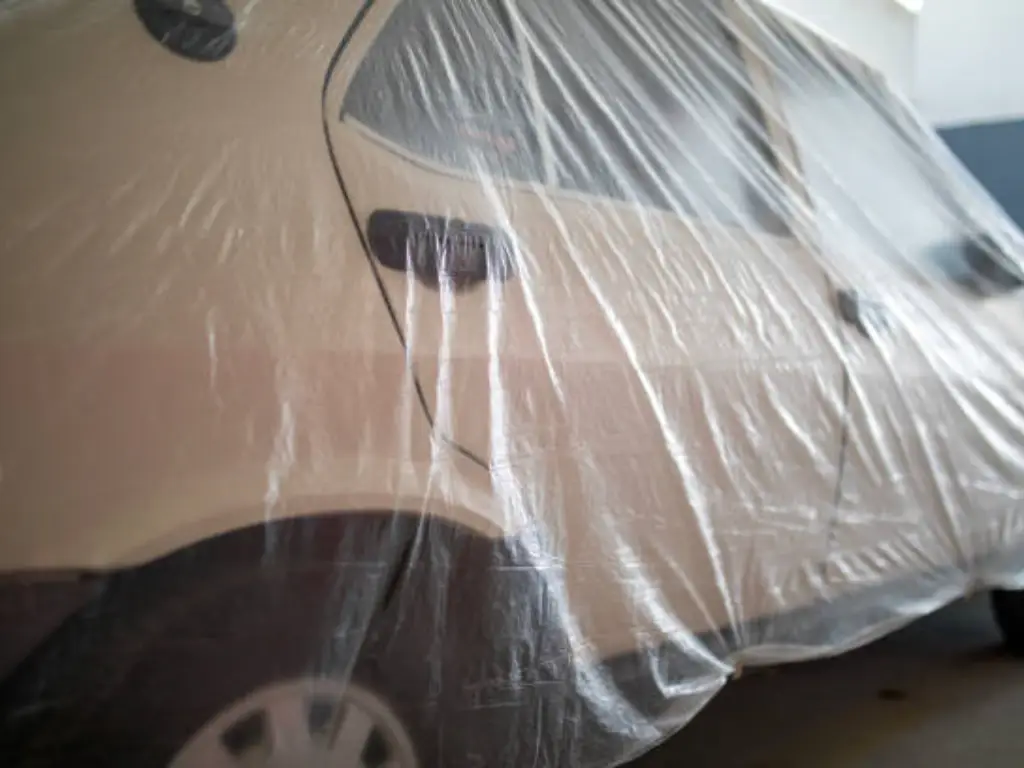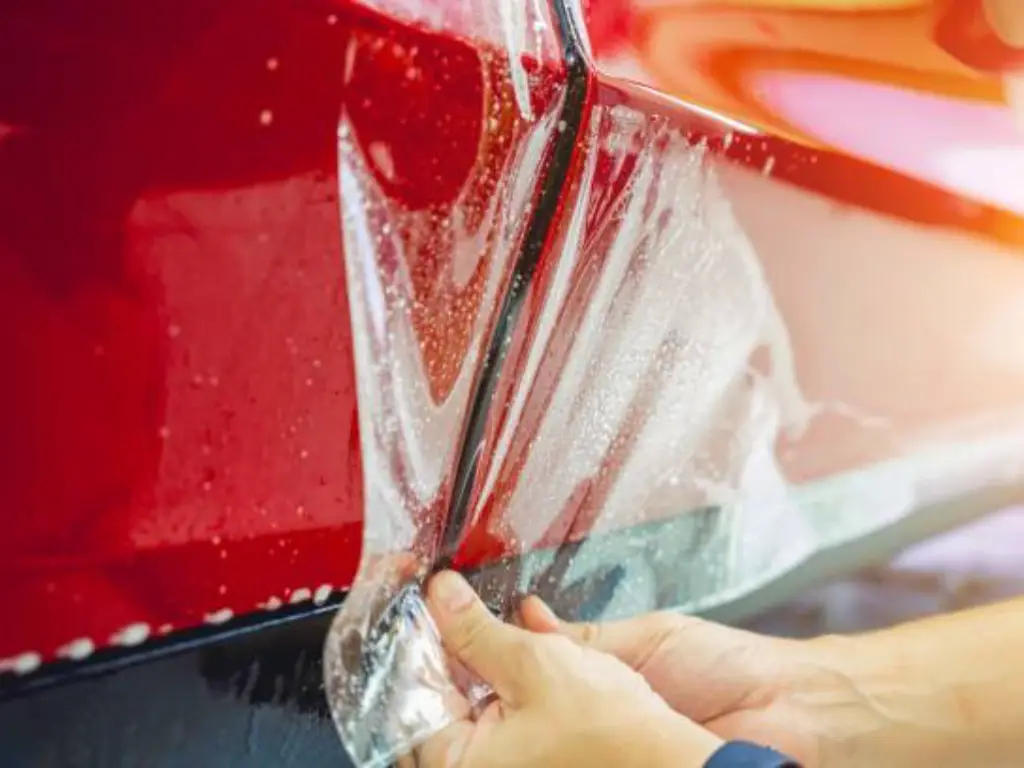PPF helps keep your car’s paint in top shape by offering important protection. It prevents the car from getting damaged by road debris, stone chips, and the environment, so it keeps its original shine. Still, many people who love luxury cars and own them often ask if PPF will become yellow over time. It is a sensible concern, especially if you want your car to stay attractive for a long period. We’ll go over this question and give you the information you require to keep your investment in order.
Early PPF vs. Modern Innovations
At the beginning, people were usually disappointed by what paint protection film (PPF) could do. At first, PPF was made from PVC, which gave basic protection but had major disadvantages. It did not have the flexibility, clarity, or resistance to UV rays that are now important. If you’ve noticed a yellowish film on an old car bumper, you’ve probably seen the results of early PPF.
But today’s PPF is not the same as what it used to be. Nowadays, we rely on Thermoplastic Polyurethane (TPU), a special polymer created for lasting durability and clear vision, with thermoplastic urethane features. It goes beyond technical changes and changes what PPF can achieve. With their ability to resist chemicals and self-heal, TPU-based films are built to satisfy both the environment and the needs of car owners.
Here’s a side-by-side comparison to show just how far we’ve come:
| Feature / Attribute | Early PPF (PVC-based) | Modern PPF (TPU-based) |
|---|---|---|
| Base Material | Polyvinyl Chloride (PVC) | Thermoplastic Polyurethane (TPU) |
| UV Resistance | Poor – prone to yellowing over time | Excellent – infused with harmful UV inhibitors |
| Optical Clarity | Often cloudy or dull | High gloss and crystal-clear finish |
| Flexibility | Rigid – difficult to apply on curved surfaces | Highly flexible – conforms easily to contours |
| Durability | 1–3 years average | 5–10 years, depending on brand and maintenance |
| Self-Healing Ability | None | Yes – heat-activated surface recovery |
| Weather Resistance | Limited | Excellent – resists paint oxidation, road salts, rain |
| Aesthetic Impact | Often made paint look worse over time | Enhances gloss, preserves original color |
Moving to TPU is more than a material change; it also deals with significant issues that consumers have. It was common for older films to have yellowing, cracking, and peeling. Because of the use of UV stabilizers and anti-yellowing agents, PPF now keeps its look for a long time, even when exposed to strong sunlight.
The main advantage for users is that everything looks much clearer. TPU films help your car’s paintwork stay shiny and vibrant just as it was when you bought it. Early adopters didn’t enjoy the same sense of confidence and peace of mind that people have today.
There is evidence to back up these claims. In 2023, the U.S. PPF market experienced a 22% increase from the previous year, mainly because people trust that modern films will last and perform well. This is not just a trend—it proves that the right technology can change how we look after our cars.

Core Causes of PPF Yellowing
Although PPF technology helps prevent yellowing, knowing what causes it is still very important. Even though advanced materials are used, some things can still cause or resemble yellowing. These are the main reasons behind the problem:
- UV Exposure: UV rays from the sun are still the main reason for sun damage. Although modern TPU films have UV inhibitors, if they are exposed to intense UV radiation for a long time, they may still break down or age faster in some cases. Consider it like never using sunscreen while sunbathing; even the strongest skin can get worn out eventually. For example, Florida’s strong UV rays put a lot of pressure on PPF, and the situation is even worse in other harsh climates.
- Oxidation: When a film is exposed to oxygen and pollutants in the environment, it can chemically break down with time. This process of oxidation can cause the film’s polymers to deteriorate, which often leads to a yellow tint, mainly in films that are not of high quality. It is similar to how a car’s paint can become dull because of oxidation.
- Environmental Contaminants: Road dirt, exhaust, industrial waste, and chemicals (such as strong cleaners or acidic bird droppings) can get into the film’s surface or even its tiny pores. The yellowing isn’t caused by the film itself, but by dirt and other things that stick to its surface. If not dealt with, it can cause serious damage to your paint.
- Low-Quality Materials: The main issue is when the materials used are of low quality. Many low-cost PPF products do not contain the same TPU base, strong UV inhibitors, and specialized top coatings that are in premium films. Such films often exhibit poor UV resistance, making them more likely to yellow and deteriorate sooner. The adhesive parts of the film can become less stable, which can lead to discoloration. If these films are not protected, they can easily become disappointing.
Identifying True vs. “False” Yellowing
It’s common for owners of these cars to mistake surface contamination for actual PPF yellowing. Differentiating between true material degradation and a superficial stain is vital for proper diagnosis and action. Here’s a quick guide:
| Feature | True Yellowing (Material Degradation) | “False” Yellowing (Surface Contamination) |
|---|---|---|
| Appearance | Uniform yellowing throughout the film, often dulling the car’s paint. | Patchy, streaky, or localized discoloration. Can appear brownish or grayish. |
| Feel | Film may feel slightly brittle or less supple if degradation is advanced. | Film texture remains consistent, though it might feel gritty in affected areas. |
| Cleaning Test | Will not come off with thorough cleaning or gentle decontamination. | Can often be significantly reduced or removed with proper cleaning, clay bar, or specialized decontamination products. |
| Common Causes | UV radiation, oxidation, poor quality film/adhesive, manufacturing defects. | Road tar, industrial fallout, dirt buildup, hard water spots, acidic bird droppings, improper cleaning. |
| Solution | Film replacement is usually necessary, sometimes leading to costly repaints. | Thorough cleaning, decontamination, and proper maintenance. |
Before you conclude that your PPF has yellowed beyond repair, try a thorough cleaning and decontamination process. You might be surprised to find that what seemed like irreversible yellowing was merely external grime, waiting to be wiped away.

ClearPro’s Anti-Yellowing Technology
At ClearPro, we know that being clear is very important. Preventing yellowing is an important part of what we do when making our films. We make sure to provide lasting transparency, not just promise it.
Our ClearPro PPF uses a carefully designed system made up of several layers. The main material in our film is a TPU, which is known for being very tough and for not yellowing. This is not like regular TPU; it is made to keep its clarity, even when exposed to tough conditions.
Sophisticated UV inhibitors and anti-oxidation agents are included in the TPU layer. Consider them as tiny protectors, constantly blocking ultraviolet rays and stopping the reactions that cause your skin to darken. Because of this dual action, our film stays almost invisible and helps daily commuters and luxury car enthusiasts make a smart investment in their vehicle’s paint pigments, ensuring they stay exactly as they were.
In addition, our films have a top coat that can heal itself. This feature is able to fix small scratches and swirl marks and also acts as an extra layer of protection against pollutants and contaminants. As a result, there are fewer chances for outside factors to cause yellowing, so taking care of your ClearPro film is easier and it stays clean for a long time. Because we want you to have true and lasting clarity, we have put in a lot of effort, which is why our clients often see a better value and resale price for their vehicles.
Maintenance for Long-Term Clarity
Even the most today’s advanced films benefit from proper care. Regular maintenance is like a healthy diet for your film, ensuring its longevity and maintaining its optical clarity.
Here are some essential tips:
- Regular, Gentle Washing: Wash your car often with a shampoo that has a neutral pH. Do not use strong detergents, stiff brushes, or strong washers near the edges of the film, as they can lift the film. Washing your hands is usually the best way to clean a car with PPF.
- Prompt Contaminant Removal: Remove bird droppings, bug splatters, and tree sap as soon as you notice them. If these acidic or sticky substances are allowed to stay on the film for a long time, they can damage it. As soon as you notice a stain, clean it off with a soft cloth and the right cleaner.
- Avoid Harsh Chemicals: Stay away from petroleum-based solvents, waxes with rough abrasives, or degreasers unless they are made for use on PPF. They may cause the film to become damaged or lose its stickiness.
- Consider a Ceramic Coating/Sealant: You could also apply a ceramic coating or sealant over your film to give it additional protection. As a result, the surface becomes even better at repelling water and dirt, and it is more resistant to UV rays.
- Use Soft Microfiber Towels: When drying or wiping, always use clean, soft microfiber towels to prevent scratching or marring the film’s surface. This meticulous care protects the glossy finishes or matte PPF finishes alike.
Warranty & Investment Protection

The warranty given by the manufacturer when you buy PPF is a key sign of how reliable and confident the brand is about its product. A good warranty is a sign that the film will last and the company cares about your happiness.
ClearPro offers a 12-year global warranty to back up its product. The report on the paint protection film industry points out that this guarantee covers against yellowing, cracking, staining, and delamination when the product is used as intended. Because ClearPro lasts for over a decade, you can be sure your investment is safe and your windshield will stay clear and protected for a long time. It’s not only about fixing possible issues; it’s about giving you the best peace of mind, turning your PPF installation into a truly valuable and secure addition for your car, which can increase its resale value.
Expert Tips for PPF Longevity
To maximize the lifespan of your paint protection film (PPF) and keep your vehicle looking pristine, a few expert tips are essential, including proper paint protection film installation, regular maintenance, and considering a full car repaint as part of mindful habits that can make all the difference.
1. Professional Installation
The quality of installation is crucial. Certified professionals ensure the surface is properly prepped, cuts are precise, and the film is applied smoothly, avoiding bubbles and contamination. A well-installed PPF performs better and lasts longer.
2. Consider Your Vehicle’s Color
Lighter-colored cars are more prone to showing dirt and grime, which can make the PPF look discolored. While the film itself won’t yellow, regular washing is especially important for light-colored vehicles to keep it looking fresh.
3. Parking Habits
Where you park matters. Parking in the shade or a garage minimizes exposure to UV rays, pollutants, and environmental contaminants that can degrade the PPF. If you park outside, choose a shaded area whenever possible.
4. Replacement Time
Even high-quality PPFs wear out over time. Signs like visible damage, deep etching from dirt, or even minor scratches and the approaching end of the warranty period indicate it may be time for a replacement. Replacing the film is more cost-effective than a full repaint.
By following these expert tips, you can ensure your PPF protects your car’s paint for years, maintaining its flawless appearance.








